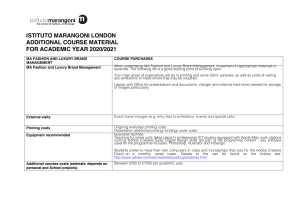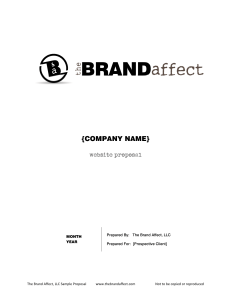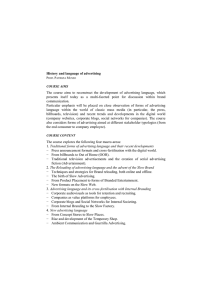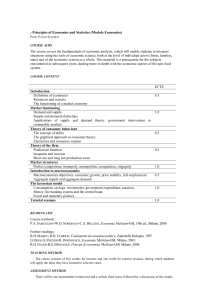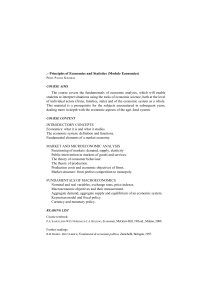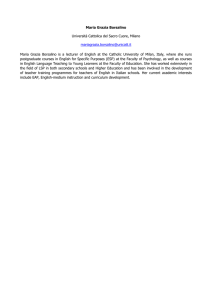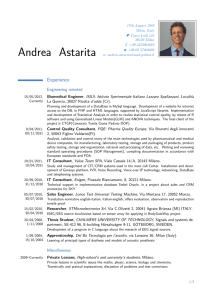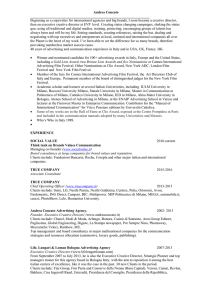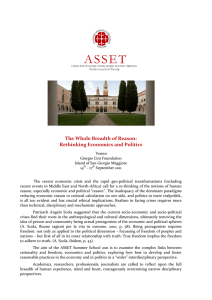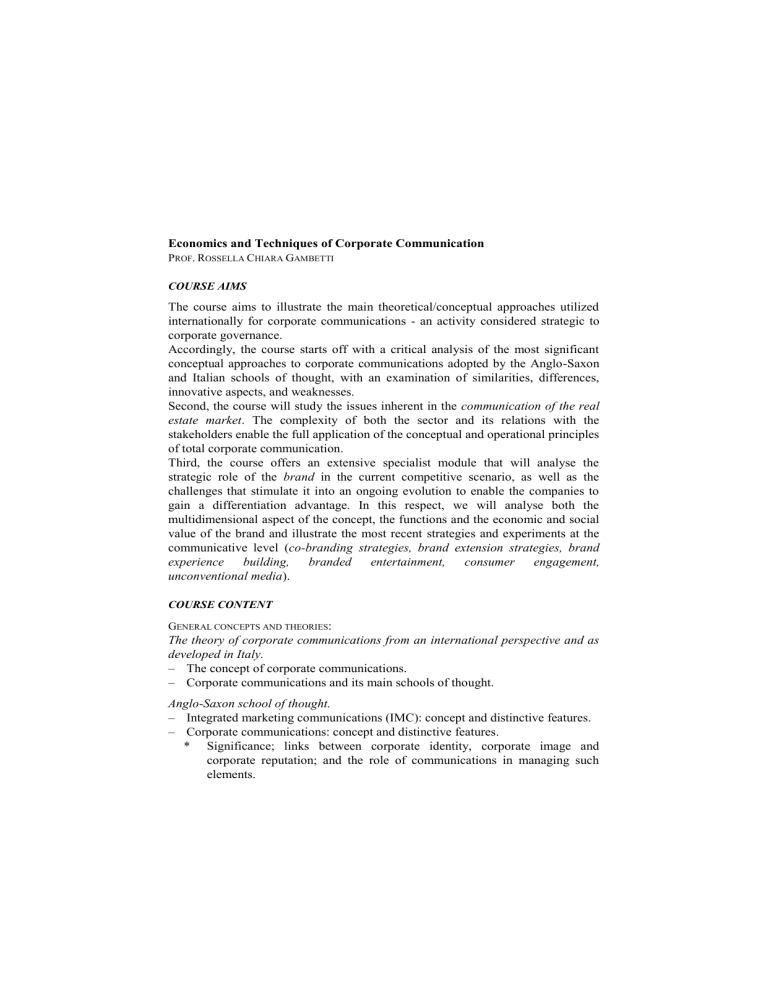
Economics and Techniques of Corporate Communication
PROF. ROSSELLA CHIARA GAMBETTI
COURSE AIMS
The course aims to illustrate the main theoretical/conceptual approaches utilized
internationally for corporate communications - an activity considered strategic to
corporate governance.
Accordingly, the course starts off with a critical analysis of the most significant
conceptual approaches to corporate communications adopted by the Anglo-Saxon
and Italian schools of thought, with an examination of similarities, differences,
innovative aspects, and weaknesses.
Second, the course will study the issues inherent in the communication of the real
estate market. The complexity of both the sector and its relations with the
stakeholders enable the full application of the conceptual and operational principles
of total corporate communication.
Third, the course offers an extensive specialist module that will analyse the
strategic role of the brand in the current competitive scenario, as well as the
challenges that stimulate it into an ongoing evolution to enable the companies to
gain a differentiation advantage. In this respect, we will analyse both the
multidimensional aspect of the concept, the functions and the economic and social
value of the brand and illustrate the most recent strategies and experiments at the
communicative level (co-branding strategies, brand extension strategies, brand
experience
building, branded
entertainment, consumer engagement,
unconventional media).
COURSE CONTENT
GENERAL CONCEPTS AND THEORIES:
The theory of corporate communications from an international perspective and as
developed in Italy.
– The concept of corporate communications.
– Corporate communications and its main schools of thought.
Anglo-Saxon school of thought.
– Integrated marketing communications (IMC): concept and distinctive features.
– Corporate communications: concept and distinctive features.
* Significance; links between corporate identity, corporate image and
corporate reputation; and the role of communications in managing such
elements.
*
Corporate social responsibility and the role of crisis communication in
defending and strengthening a company's reputation.
Italian school of thought.
– Total business communications: concept and distinctive features.
* The concept of a communications culture, the four related axioms, and the
communications perspective in corporate governance.
* Identity/image relationships and the oversize strategy.
* From communications perspective to total communications policy.
* Planning and control of the total communications policy.
Summary vision: comparison between the theoretical approaches illustrated with
reference to corporate communications.
SPECIAL SUBJECT
The brand. Multi-dimensionality, value and communicative experimentation
– The concept and the functions of the brand.
– The extent of the economic value of the brand (brand equity).
– Experimentation in brand strategies: towards consumer engagement (cobranding; brand extension; brand experience; branded entertainment).
– Business happenings in the brand strategy.
– The web as an instrument for building the brand experience: online branded
entertainment.
– The application of a touchpoints approach to communication and the use of
unconventional media: ambient communication.
PRACTICAL ASSIGNMENTS
Students will be involved in group project works on a specific brand managing
case; those works are commissioned and judged by a master firm on consumer
goods.
Students are also required to attend a series of seminars (10 hours) on the theme of
“Environmental Communication, Green Marketing and Competitive Advantage”,
held by Dr. Stefania Vitulli.
READING LIST
For attending students
R.C. GAMBETTI-S. QUIGLEY (eds.), Managing corporate communication: a cross-cultural approach,
Palgrave McMillan, Eastbourne (UK), 2012, (Chapters 1, 2, 4, 9, 10 and 13).
Further readings available on lecturer’s webpage (downolad area password needed).
For non attending students
R.C. GAMBETTI, La comunicazione d’azienda tra contesto globale e sviluppo locale, Giappichelli,
Torino, 2006.
R.C. GAMBETTI-S. QUIGLEY (eds.), Managing corporate communication: a cross-cultural approach,
Palgrave MacMillan, London, 2012.
R.C. GAMBETTI-L. PELLEGRINI, La comunicazione nella filiera immobiliare. Fondamenti concettuali,
principi gestionali e strumenti operativi, F. Angeli, Milano, 2010.
Further readings (suggested)
E.T. BRIOSCHI, Communicative business. Il governo dell’azienda e della sua comunicazione
nell’ottica della complessità, Vita e Pensiero, Milano, 2008.
E.T. BRIOSCHI, Total business communication. Profiles and problems for the new century, Vita e
Pensiero, Milano, 2006, (pp. 69-115).
K.L. KELLER-B. BUSACCA-C. OSTILLIO, La gestione strategica del brand, Egea, Milano, 2005.
E.T. BRIOSCHI, Dalla pubblicità alla Comunicazione d’azienda: problematiche, metodologie e
questioni aperte, Vita e Pensiero, Milano; 2013.
TEACHING METHOD
Interactive lectures, talks by guest experts, group assignments.
ASSESSMENT METHOD
Final written exam.
NOTES
Further information can be found on the lecturer's webpage at
http://docenti.unicatt.it/web/searchByName.do?language=ENG, or on the Faculty notice
board.


